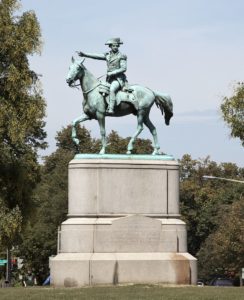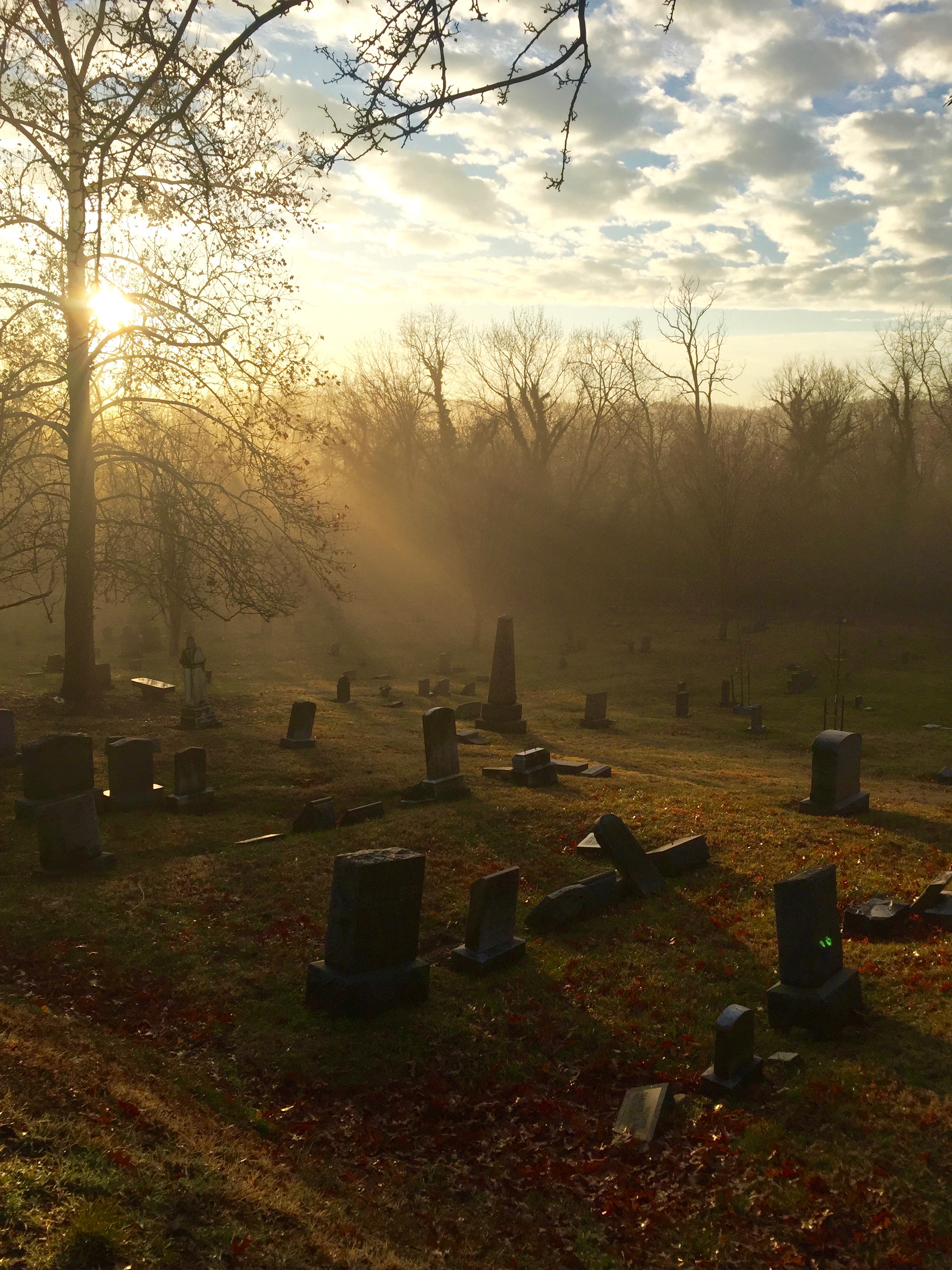 When I moved to Capitol Hill some sixteen years ago, I very quickly discovered Stanton Park, located just a block north of 4th Street and Constitution Avenue NE. There, my dog Morgen made friends with th other dogs who frolicked at its eastern end. Occupying two square blocks, in the middle of the park stands a massive bronze statue of a man named Nathanael Greene. Unfortunately, the plaque mounted on the granite base of the statue gave no hint about this Greene fella. Over time, I developed several theories about Nathanael. The one I stuck with for a while was that he was America’s first proctologist, his finger pointing straight toward the Capitol, three blocks away. As it turns out, I was wrong.
When I moved to Capitol Hill some sixteen years ago, I very quickly discovered Stanton Park, located just a block north of 4th Street and Constitution Avenue NE. There, my dog Morgen made friends with th other dogs who frolicked at its eastern end. Occupying two square blocks, in the middle of the park stands a massive bronze statue of a man named Nathanael Greene. Unfortunately, the plaque mounted on the granite base of the statue gave no hint about this Greene fella. Over time, I developed several theories about Nathanael. The one I stuck with for a while was that he was America’s first proctologist, his finger pointing straight toward the Capitol, three blocks away. As it turns out, I was wrong.
While on a trip to Savannah, Georgia some years later, I decided to take a bus tour of the city. As we were driving along, the tour guide made mention of a house still standing from the Revolutionary War era. The guide noted that a widow, Catherine Greene lived in the house with her young children, her husband, Nathanael having died unexpectedly.
It seems that Green, a decorated general in George Washington’s army, was given a plantation named Mulberry Grove, outside of Savannah. Having earlier sold his Rhode Island home to help finance the Revolutionary War, he was given the plantation by the government of Georgia as thanks for his having saved Savannah. “In May 1781 patriots led by Elijah Clarke and Andrew Pickens fought to regain control of Augusta, a crucial town in the struggle for Georgia. Greene sent an army under Colonel Henry “Light-Horse Harry” Lee to support the revolutionaries. As the first troops of the Continental army to enter Georgia in more than a year, they boosted the morale of the Georgia residents and with their help, Augusta was back under American control within two weeks.”[1] Clearly, the Georgians were quite pleased with Nathanael’s role in saving the colony. He and his family lived on the Mulberry Grove estate for less than a year. The plantation did not become profitable and he and his family moved into the city of Savannah. His time was short-lived however, and Greene died unexpectedly of sunstroke in 1786, at the age of forty-four.
Now according to the tour guide, no doubt a well-informed historian, Nathanael was in constant fear of sunstroke. While surveying is plantation by horse, he wore a wide brimmed hat with a thermometer dangling to the side. By checking the temperature, he apparently felt assured that he would not suffer such a fate. However, on what was to become his last day on earth, Nathanael set out on his stallion but forgot his hat and of course, he suffered sunstroke and died.
In need of a tutor for her children, Catherine had previously hired a black gentleman named Eli Whitney, who had invented the cotton gin while in the Greene’s employ at Mulberry Grove.
While that put the statue in perspective, I still like my theory about the statue of man on Capitol Hill.
[1] http://www.georgiaencyclopedia.org/articles/history-archaeology/nathanael-greene-1742-1786

